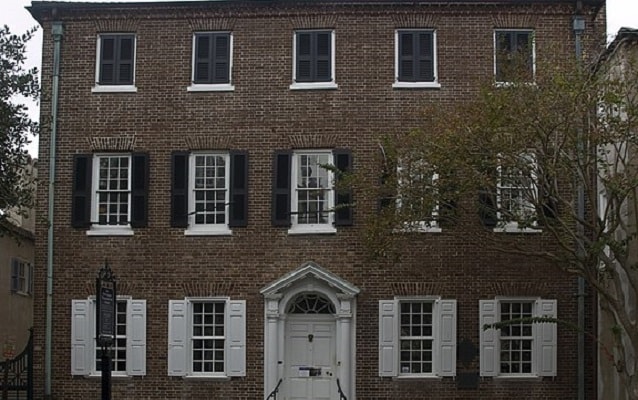Last updated: September 18, 2018
Place
Heyward-Washington House

By Ymblanter - Own work, CC BY-SA 4.0, https://commons.wikimedia.org/w/index.php?curid=65583799
Constructed in the early 1770s, the Heyward-Washington House was the home of Thomas Heyward, Jr., a signer of the Declaration of Independence. Raised in a wealthy family that made their money from the forced labor of enslaved Africans, Heyward was well educated and became involved in South Carolina politics.
Heyward also supported independence from Britain and fought in several notable battles during the American Revolution. During the Siege of Charleston, residents fought to protect the city from the British but were eventually forced to surrender. After the battle, British troops arrested Heyward at his home and imprisoned him in the Old Exchange Building in Charleston. He was eventually sent to St. Augustine, Florida until freed in a prisoner-exchange.
The revolutionary war veteran became involved in politics and served in various branches of government. Heyward also hosted President George Washington during his tour of the country in 1791. The house was subsequently called the Heyward-Washington House.
After retiring from public service, Heyward sold the property to John Grimké, an officer in the Revolutionary War. Similar to the Heyward family, the Grimkés were elite members of Charleston society who prospered from the institution of slavery. John Grimké and his family spent time at both their plantation home as well as their house in Charleston. Grimké was a slave-owner, yet his daughters, Sarah and Angelina Grimké, were outspoken critics of slavery. The two women became several of the first female abolitionists in America. They also advocated for voting rights for women.
Over the next century, the property changed hands several times until it was acquired by the Charleston Museum in 1929. The following year, the Heyward-Washington house opened to the public as the city’s first historic house museum. In 1978, the house was designated a National Historic Landmark.
